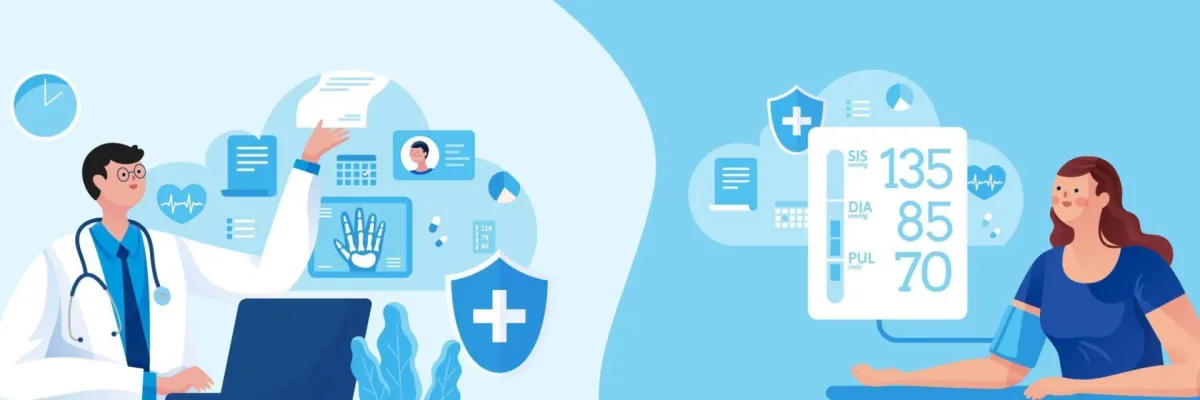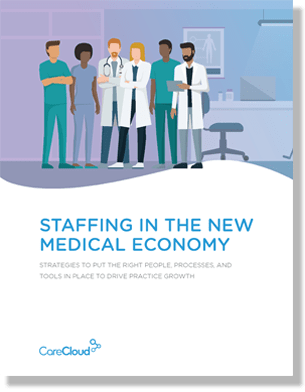For patients with chronic conditions, getting to the hospital or doctor’s office for care can be time-consuming, especially for those patients who incur travel costs and risk infection by traveling to their provider. For healthcare systems, managing the care of patients with chronic conditions can be just as challenging, as these patients require an elevated level of care and routine visits to the emergency room.
Remote patient monitoring (RPM) has emerged as a solution that can help healthcare providers stay on top of patients’ chronic illnesses. By combining cutting-edge technology and a high-touch approach to proactively monitor patients with chronic conditions, RPM can help care teams stay one step ahead of their patient’s needs.
What is Remote Patient Monitoring (RPM)?
According to the U.S. Department of Health and Human Services (HHS), remote patient monitoring (RPM) is a technology that allows healthcare providers to monitor fluctuations in daily readings of a patient’s health in the comfort of their own home, enabling providers to manage acute and chronic conditions, while cutting down the number of times patients have to commute to see a doctor.
The HHS lists several benefits of remote patient monitoring, including fewer hospitalizations, shorter hospital stays, fewer emergency room visits, better health outcomes, better preventative management, and reduced risk of infection for both patients and healthcare professionals. In addition, less crowded emergency and waiting rooms mean care staff will have more time to provide excellent care to their onsite patients.
This is typically accomplished by leveraging connected electronic devices to provide real-time, actionable data, which helps providers better understand a patient’s condition and make proactive clinical decisions that can help keep patients from having to visit the emergency room or make an appointment.
Benefits of Remote Patient Monitoring (RPM)
-
Better Health Outcomes
Many providers are also seeing patients come in with a long list of issues that were put off during the pandemic, as more than 40% of U.S. adults had delayed or avoided medical care by June 2020. Patients with chronic illnesses were even more likely to stay away from healthcare offices–a situation that can quickly deteriorate, as these patients need to be tracked closely to keep their conditions from getting worse. When those patients finally decided to see a doctor, there was a hike in fuel prices, meaning every trip to the doctor can be quite costly for chronic patients who have to commute almost on a daily basis for a routine checkup.
Research into the effectiveness of RPM solutions is clear, with patients enrolled in RPM programs reporting better outcomes. One such study shows that people with diabetes who were monitored remotely saw their A1C levels drop by 2% over three months and 2.2% over six months. Another study found that patients were 58% less likely to be admitted for an unplanned hospital stay during the first month of a remote oncology monitoring program. Research also backs the use of RPM for post-surgery care and rehabilitation, with one study touting a fourfold reduction in hospitalizations among the knee and hip replacement patients who used RPM tools at home.
By remotely monitoring a patient’s health, healthcare providers can prevent emergencies and needless trips to the hospital. RPM systems can alert doctors to critical vital signs, enabling doctors to manage treatment remotely and implement a care plan, before the patient’s condition reaches an emergency status. This prevention-before-treatment approach will result in healthier and happier patients.
-
Fewer and Shorter Emergency Room Visits
Armed with remote patient monitoring, healthcare systems can help keep emergency rooms from becoming overcrowded, which has long been an issue in the healthcare industry. Even before the COVID-19 pandemic, emergency department visits have been rising steadily, increasing by more than 60% since 1997 to nearly 146 million in 2016. Before the pandemic, 90% of emergency departments said they were stressed beyond the breaking point at least some of the time, and that has only gotten worse, as the average length of stay during the pandemic was more than 10% higher.
With the ability to monitor a patient’s health from home, providers can take the burden off of already stressed-out emergency departments and keep more beds available. One recent study showed that remote patient monitoring led to better treatment for COVID-19 patients, with remotely monitored patients recording an average length of stay nearly three days shorter than those not remotely monitored.
-
Cost Savings
Caring for chronically ill patients is very expensive, as 90% of the United States’ $4.1 trillion in annual healthcare expenditures are for people with chronic and mental health conditions, and direct healthcare costs for those patients average about five times that of a person without a chronic disease. These costs are only expected to grow, as the number of Americans with three or more chronic health conditions is expected to reach 83 million people by 2030, up from 31 million in 2015.
With chronic diseases making up such a large part of the healthcare system’s cost center, tackling that issue with technology that is proven to lead to reduced costs only makes sense. RPM allows healthcare systems to reduce readmission rates and avoid associated costs and penalties while keeping providers available to care for other patients.
-
Better Preventative Care Management
There are clinical preventative strategies available for many chronic diseases that include intervening before the disease occurs, detecting and treating the disease at an early stage, and managing diseases to stop or slow their progression. In short, preventative care can address these chronic conditions before they pose a bigger threat to the patient. However, clinical preventive services are underutilized, with one study suggesting that fewer than 10% of adults over the age of 35 received all recommended, high-priority clinical preventive services.
A remote patient monitoring solution will give your care team all of the tools it needs to increase those numbers and help patients better manage their conditions. Research backs this up, with one recent study showing that RPM digital engagement is around 80%, and compliance with care plan tasks can reach over 70% for highly critical patients. Data also shows hospital admissions and mortality rates are also lower among remotely monitored patients.
Invest in RPM to be more a Proactive Healthcare Organization
The ability to monitor patients remotely delivers unparalleled capabilities to any healthcare practice tasked with caring for patients with chronic conditions. The technology positions forward-thinking practices in the next generation of healthcare by reframing the patient-provider relationship from a passive-reactive transaction to an active-proactive connection, while reducing the burdens–for both patient and provider–of chronic disease management. By reframing the patient-provider relationship and taking a prevention-before-treatment approach, healthcare organizations can ensure that their most high-risk patients receive the care they need without overburdening the healthcare system.




